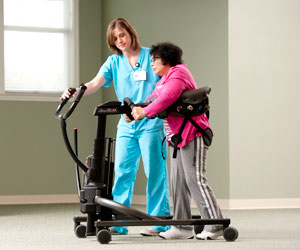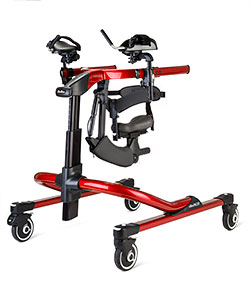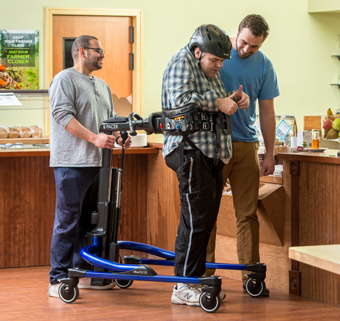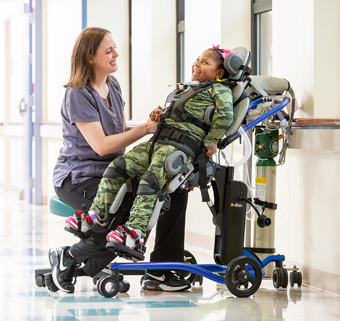In the Interest of Early Mobility
| August 2012With the introduction of the Rifton TRAM and XL Pacer to the world of adults with disabilities, we have received a number of inquiries concerning the value of these products in the ICU and critical care settings. I don’t have all the answers, but here’s what I’ve found:

Early ICU mobility is working its way into the research spotlight and being closely examined as a means to combat the physical debilitation and neuromuscular complications brought about by long periods of immobilization from prolonged bed rest and sedation in the critically ill. More than that, hospitals are consistently under pressure to reduce costs by reducing length of hospital stays and readmissions in this population. Early mobility is presenting as an increasingly likely solution. In fact, multiple studies show that early ICU mobility decreases length of stay,1, 2,3,4 hospital re-admittance and death.5 Rather, it facilitates an earlier return to independent functional status.6
The long-held belief that physical activity may be harmful to fragile ICU patients is also being rapidly dispelled by such research. Additionally, Bailey et al conducted a seven-month study directly related to this question. They found that in a population of patients with respiratory failure on mechanical ventilation, the practice of early mobility was both safe and feasible.7
But there are a few set-backs linked to this trend. There are staffing and equipment issues, and patient safety concerns. And no wonder: just to walk an ICU patient using a standard rolling walker requires a therapist and up to five assistants moving the life-support equipment, guarding against a fall, and ensuring the patient’s bodily monitors and tubes stay secured.
And as good as the literature is and as much as physicians support the implementation of early mobility, the burden of care at present falls mostly on the nurses in coordinating the activity. As we all know, nurses are often short-staffed with patient overload. So the implementation of early mobility is still premature, necessitating staffing models and operational protocols.

However, an alternate approach to this dilemma would be to focus on gait training equipment that will minimize staffing and ensure patient safety through full body support. I propose the Rifton TRAM and the Pacer XL. The Pacer XL is more than a mobile walker, with a pelvic support and other prompts built to support the full body weight of a user, but at the same time allow for independent ambulation and weight bearing. Life-support equipment could be attached to the various posts of the Pacer XL (or modifications designed to accommodate). The Rifton TRAM has the added benefit of being able to lift a patient from sit to stand for gait training with similar full-body weight support as the Pacer XL. It all could be part of the solution to early mobility.
What do you think?
References
1. Needham DM, Korupolu R, Zanni JM, et al. Early physical medicine and rehabilitation for patients with acute respiratory failure: a quality improvement project. Arch Phys Med Rehabil. 2010;91(4):536-42.
2. Needham DM, Korupolu R. Rehabilitation quality improvement in an intensive care unit setting: implementation of a quality improvement model. Top Stroke Rehabil. 2010;17(4):271-81.
3. Winkelman C, Johnson KD, Hejal R, et al. Examining the positive effects of exercise in intubated adults in ICU: A prospective repeated measures clinical study. Intensive Crit Care Nurs. 2012: Epub ahead of print.
4. Morris PE, Goad A, Thompson C, et al. Early intensive care unit mobility therapy in the treatment of acute respiratory failure. Crit Care Med. 2008;36(8):2238-43.
5. Morris PE, Griffin L, Berry M, et al. Receiving early mobility during an ICU admission is a predictor of improved outcomes in acute respiratory failure. Am J Med Sci. 2011;341(5):373-377.
6. Schweickert WD, Pohlman MC, Pohlman AS, et al. Early physical and occupational therapy in mechanically ventilated, critically ill patients: a randomized controlled trial. Lancet. 2009;373(9678):1874-82.
7. Bailey P, Thomsen GE, Spuhler VJ, et al. Early activity is feasible and safe in respiratory failure patients.Crit Care Med. 2007;35(1):139-45.




